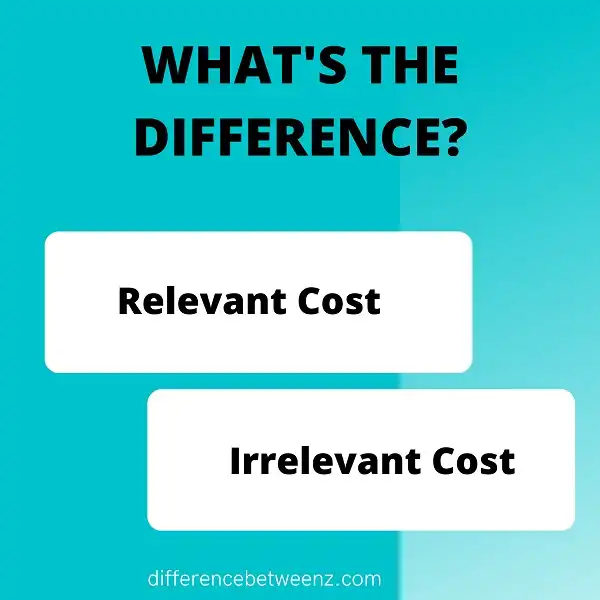When it comes to making business decisions, it’s important to understand the difference between relevant costs and irrelevant costs. Relevant cost is the costs that are directly associated with a particular decision, while irrelevant cost is any cost that doesn’t have a direct impact on the decision. In order to make sound business decisions, it’s crucial to focus on only the relevant costs. Let’s take a closer look at what this means in practice.
What is Relevant Cost?
- Relevant cost is the future economic cost that is relevant to a current decision. Relevant cost is influenced by both sunk costs and opportunity costs. Relevant costs are used in marginal analysis to make decisions about whether to continue or discontinue an activity.
- Relevant costs are those that will change as a result of the decision, and they usually involve some kind of opportunity cost. For example, if a company is considering whether to produce a new product, the relevant cost would be the cost of the materials and labor needed to produce that product.
- The company would not include the cost of the machinery that is already in place, because that is a sunk cost. The company would also not include the cost of the products that it could have made instead, because those are opportunity costs. Relevant cost is an important concept in managerial accounting because it helps managers make decisions about how to use scarce resources.
What is Irrelevant Cost?
Irrelevant cost is a term used in business decision-making that refers to any cost that does not affect the outcome of the decision. Irrelevant costs are therefore not taken into account when making decisions, as they will not change regardless of which option is chosen.
- This may seem like a simple concept, but it can be difficult to identify irrelevant costs in practice. For example, if two companies are considering merging, the fixed costs of each company (such as office rent) would be irrelevant to the decision, as these costs would not change regardless of whether or not the merger went ahead.
- However, the variable costs of each company (such as raw materials) would be relevant to the decision, as they would change depending on which option was chosen.
- Irrelevant cost is an important concept in business decision-making, as it helps managers to focus on the factors that will actually affect the outcome of their decisions.
Difference between Relevant Cost and Irrelevant Cost
Relevant cost is a managerial accounting term that describes avoidable costs that are incurred only when a particular course of action is taken. Relevant costs are those costs that differ among alternative choices and, therefore, should be considered when making business decisions.
- Relevant costs include both sunk costs and future costs. In contrast, irrelevant costs are avoidable costs that remain unchanged regardless of the chosen course of action.
- For example, the purchase price of a new piece of equipment is an irrelevant cost when deciding whether to repair or replace the existing equipment. The decision should be based on the relevant cost of repair versus the relevant cost of replacement.
- Relevant cost analysis is used to identify the avoidable Costs that should be considered when making business decisions. It is important to consider all Relevant Costs when making business decisions in order to make the best decision for the company.
Conclusion
The next time you’re considering a business decision, it might be helpful to remember the difference between relevant and irrelevant costs. Relevant costs are those that will impact your bottom line in some way, while irrelevant costs are just expenses incurred along the way. By keeping these distinctions in mind, you can make more informed decisions about where to allocate your resources and how best to grow your business.


